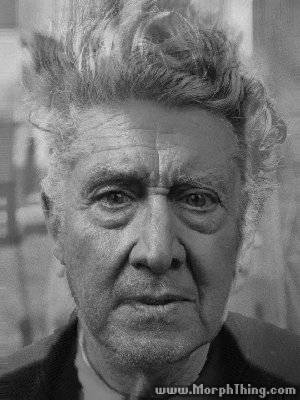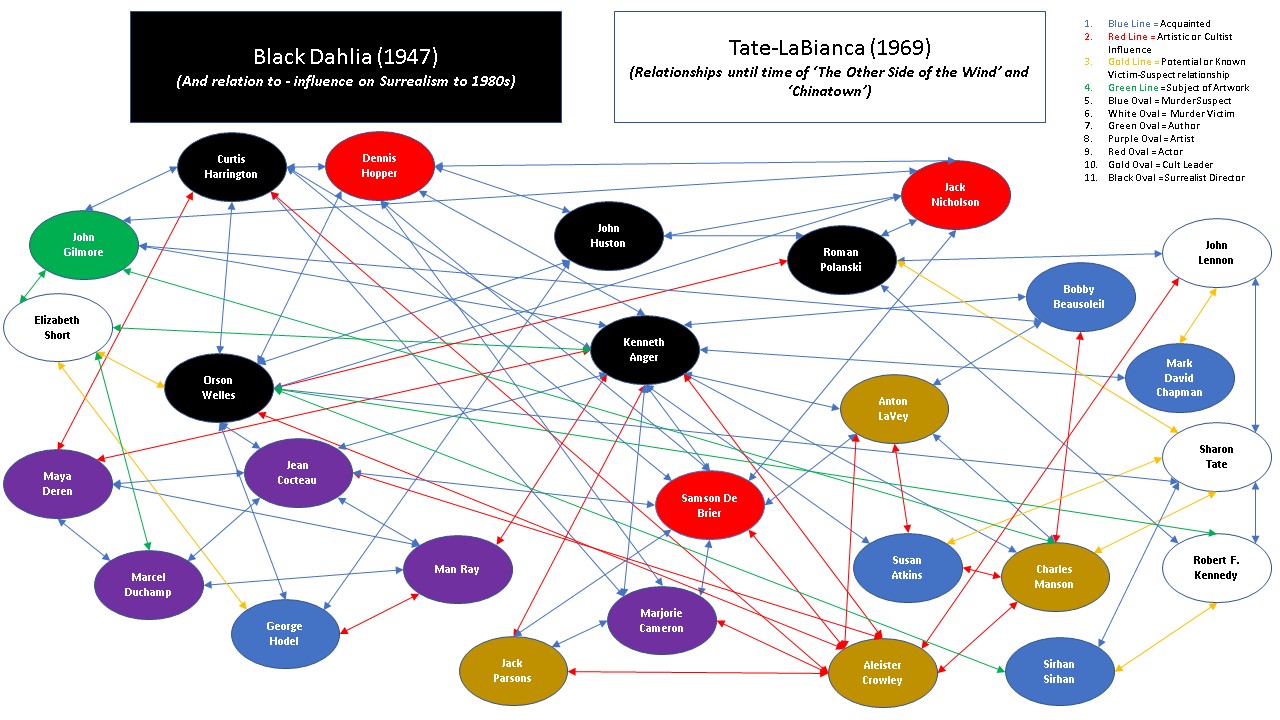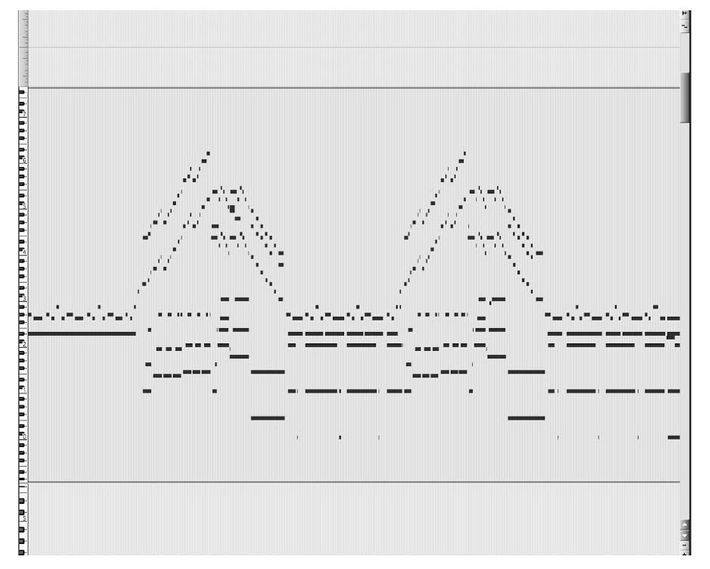As parcel to my 30 day trial of Netflix (to watch ‘Tiger King’ of course, so I could compare it with ‘Cat Dancers’), I also thought to catch up on Surrealist director David Lynch’s seminal series from April 1990-June 1991: ‘Twin Peaks’. I also watched his 2020 short film ‘What Did Jack Do?’ which seems to be a Netflix exclusive.
A common theme at this blog has been studying the cultural movements of Communism, Theosophy, and Surrealism as they may relate to the currents of Russian information operations. I am not sure you could find many television shows which embodied all these concepts if you looked – but Twin Peaks would absolutely be one of them. (It also has a memorably eerie and yet hopeful soundtrack. To paraphrase the series’ dialogue, I am not sure if it represents a nightmare or a beautiful dream.)
Considering how I have also repeatedly related movements like Theosophy and Surrealism to apparent Russian divide and conquer information operations affecting fascist and anti-fascist groups – specifically to the benefit of communism – the whole idea of twin peaks itself seems to echo the very notion of such social polarization and conflict in modern politics.
First, I should say that in 2020, the idea of communist subversion is an idea which is of interest to David Lynch. In his recent black and white What Did Jack Do? featurette (where the director also acted as a detective interrogating a monkey), perhaps the most memorable line he delivered was “Are you now or have you ever been a card-carrying member of the Communist Party?”

However, Lynch also has traveled in a group which seems to include apparent friends and influences like Surrealist director Kenneth Anger and actor-filmmaker Dennis Hopper in the time which precedes the Twin Peaks television series. These are certainly figures who embody a resistance to the HUAC-era witch hunts of Hollywood, and are associated with a network that has connection to the post-war legacy of the Russian-influenced Popular Front.
As previously blogged, as part of this network Lynch has delved into the apparently-related Black Dahlia conspiracism as well, which may potentially relate to a legacy of communist influence intended as cultural warfare.

Even Angelo Badalamenti who scored both Lynch’s subversive 1986 ‘Blue Velvet’, and the Twin Peaks soundtrack seems to have an association of working on films which were critical of the HUAC. (Note Anger’s influence on, and Hopper’s participation in Blue Velvet.)
David Lynch was also involved with the Free Roman Polanski movement. (It is my theory that Polanski was involved in promoting such things as satanism and snuff films as cultural hysterias in the West parcel to support of a communist or anti-capitalist information objective. Many people around this Free Roman Polanski movement have been relatable to the current information warfare and Russian conspiracy environment (see also).)
For the above reasons, Lynch’s identification as a Surrealist director places him relatively close to the legacy of presumable Russian influence in Hollywood, similarly to Orson Welles or Roman Polanski (one might also argue Stanley Kubrick).
Perhaps appropriately given the above observations, Surrealism itself as a movement according to founder Andre Breton related to inseparable ideas of images as politics, the image realm, and revolutionary action with communism as its goal.
The influence of Theosophy on Twin Peaks seems to come primarily from the involvement of series co-creator and writer Mark Frost. The idea of a polarized contrast between a Black Lodge and a White Lodge in the series as derived from Theosophical doctrines may also hearken to the twin peaks theme. However, other characters and figures in the show are also derivative from Theosophy.
As previously blogged, Theosophy was related to a movement led by Helena Blavatsky which was widely suspected of being a front for Russian intelligence, at least by British colonial officials in India. Ideas like the Swastika and Aryan race theory came originally from Theosophy. Agents of this movement were also among the first to spread ‘The Protocols of the Learned Elders of Zion’. It is not easy to underestimate the apparent importance of this movement to the later symbology and beliefs of the Nazis.
So on one hand, it is interesting that half of the creative force of Twin Peaks seems focused on a historical artistic discipline linked to anti-fascism and communism, but that the other half seems focused on a historical-occultist framework which inspired the Nazis. The commonality is links to the Russian secret services (both Tsarist and Communist) and presumable “information operations”. As such, the conflicting conspiratorial cultural currents Twin Peaks is made of seem to evoke a similar kind of information environment to that which ultimately resulted in World War II.
In addition, the legacy of potential Soviet spy and HUAC target Jack Parsons seems to factor into Mark Frost’s mythology of Twin Peaks as well.
There are several other things I noted just watching the first few episodes of Twin Peaks which trouble me as a self-serve student of Communist disinformation and propaganda.
First, the character of FBI Agent Cooper (played by Lynch’s frequent leading man Kyle MacLachlan) at one point evokes conspiracy theories about John F. Kennedy and skepticism about the role of Lee Harvey Oswald in the assassination which seem evocative of Mark Lane’s now- proven KGB fed disinformation.
Although Soviet KGB defector Vasili Mitrokhin did not defect with his materials proving this until 1992 – two years after the Twin Peaks pilot aired – such conspiracies have been around since the 1970’s in films like the Mark Lane, Dalton Trumbo, and Donald Freed-written ‘Executive Action’.
“There are two things that continue to trouble me, and I’m speaking now not only as an agent of the bureau but also as a human being. What really went on between Marilyn Monroe and the Kennedys, and who really pulled the trigger on JFK.” – Agent Cooper (Kyle MacLachlan)
Certainly, there is a clear theoretical Soviet disinformation value to an FBI agent character on a popular television show expressing skepticism about who is culpable for the JFK assassination and implying that Marilyn Monroe was sexually involved with the (plural) Kennedys. (I’ve noted Lee Harvey Oswald as assassin skepticism also associated with the Surrealist-linked 1981 Nostradamus film ‘The Man Who Saw Tomorrow’.)
(For what it is worth, You can ask yourself if Lee Harvey Oswald’s KGB and (Cuban) DGI connections are significant. You can ask if his time in Russia was significant, or his Russian language skills, or his Russian wife were. Or, if he left messages with KGB codewords in them. Though Oswald’s legend could certainly support a view he was a double agent of some sort, notably there is no official narrative from the US government that he had Russian espionage connections. In fact, the US document releases seem to have continually downplayed such obvious facts about Oswald, whereas the Russians have apparently been afraid of what America may say about the matter. Therefore claims of him being a double agent seem to me to reinforce the right wing conspiracy notion of the JFK assassination, which is again, the Mark Lane KGB-sponsored disinformation version. You do the math.)
The next communist propaganda connection in Twin Peaks which is interesting is that one of the main characters on the show, Josie Packard – was played by the charming actress Joan Chen – who was literally hand-picked off a Communist Chinese rifle range by Mao Zedong’s wife Jiang Qing and was once a big star in Chinese film (including specifically propaganda movies) before she came to the United States.

For these various reasons while it might all be a “cosmic” coincidence, it is interesting to look at Twin Peaks as a series – which is derivative of Russian and Communist influence – and the very idea of twin peaks themselves as perhaps being semiotically representative of the cultural polarization which has been accelerated in Western society since the fall of the Soviet Union.
Thus, Surrealism and Theosophy may theoretically be utilized to play a role in modern culture similar to that which they played relative to the conspiratorial symbolism of pre-WWII left and right wing authoritarianism. The movements’ respective cultural legacies relative to communism and fascism, and potential accompaniment to divide and conquer (dis)informational mechanics therefore are my best guess as to what Twin Peaks may effectively symbolize as artwork.
Time to watch Orson Welles‘ ‘The Other Side of the Wind‘ before my trial runs out. (First 2 minute impression is that it is a less effective film but very similar in style to ‘F for Fake‘.)
